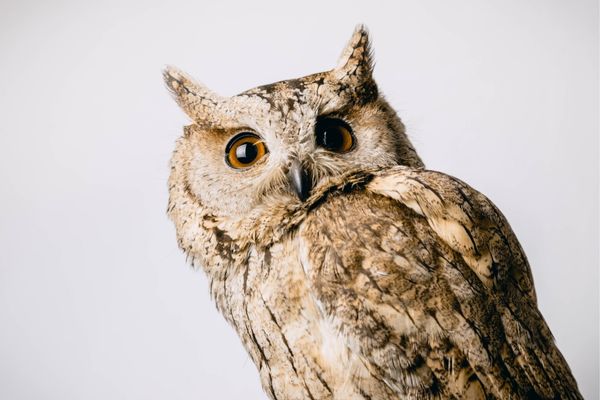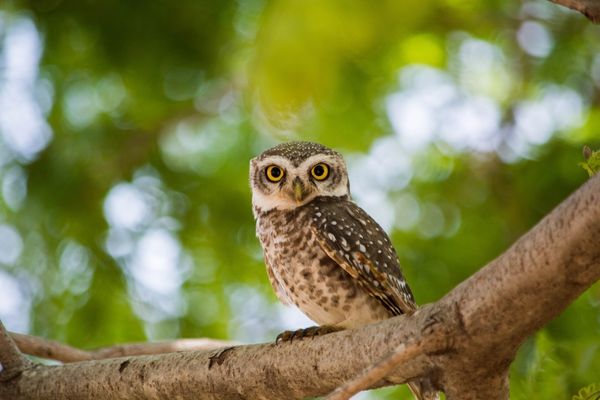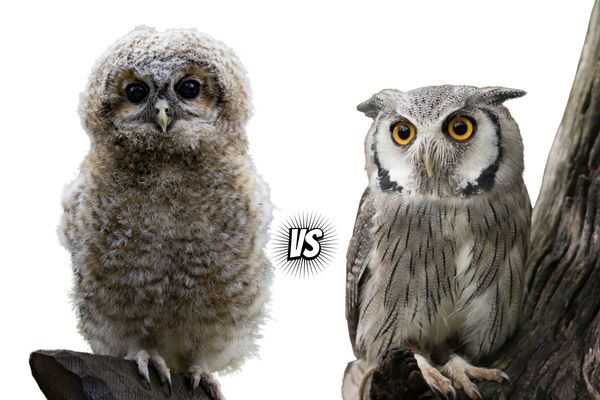All about Birds
The Mysterious Call of the Owl: Why Do Owls Hoot?
Owls have been a source of mystery and fascination for centuries. People have long wondered why owls hoot, and what the calls mean. Owls are well known for their distinctive hoots, which can be heard in the early hours of the morning or at night.
While people have speculated about the meaning of owl calls for centuries, scientists have only recently begun to study owl vocalizations in depth. What they’ve found is that owl hoots are far more complex than anyone realized and that different types of hoots carry different meanings.
The different sounds that owls make.

Owls are renowned for their hooting, but they can also make other noises too. These include screeches, barks, whistles, and the occasional trill.
The most common call is the hoot, which varies in length according to species. Some owls may have up to seven different types of hoots with different purposes.
The purpose of hooting.
Different owl species use their distinct hoots to mark out territory or attract a mate. It’s also thought that some owls may use their hoots to simply keep in touch with one another, particularly during nocturnal activities when they are more active and spread out.
Interestingly, some species of owls may even mimic other animals or sounds in their environment. For instance, the northern saw-whet owl has been known to mimic the call of another bird, while some species have been observed imitating car horns and barking dogs.
The incredible hearing of owls.

Owls have excellent hearing which helps them locate prey by sound. An owl’s ears are positioned asymmetrically on its head, allowing it to detect the direction from which a sound is coming.
This means that an owl can locate a small mouse scurrying through the undergrowth in complete darkness.
The facial discs of owls.
Owls have specialized facial discs which are comprised of feathers arranged in a circular shape. This serves to amplify sound waves and direct them toward the owl’s ears, enabling it to pinpoint greater accuracy when locating prey or communicating with other owls.
Why do owls hoot so much at night?

The answer is more complex than one might think.
Owls are nocturnal birds, and their hoots are part of their adaptation to the night. During these hours, they use sound to communicate with other owls and alert each other to potential predators or dangers in the darkness.
In addition to warning calls, owls also hoot at all the other birds around them. The sound of an owl hooting serves as a signal of territorial boundaries, and can help keep other birds away from their nests or hunting grounds.
It’s not just for securing territory that owls make noise. Hoots are used by owls to start conversations with potential mates or as a way to express emotions. For example, when an owl is feeling threatened or lonely, it may hoot loudly in order to let other owls know that they are there.
Owls also make hooting sounds when searching for food. This type of vocalization helps them locate prey in the dark and allows them to zero in on their target.
Finally, owls hoot to establish dominance in the area they inhabit. By making loud noises and flying around, an owl can demonstrate power over other birds—and protect its territory from intruders.
Different mating and territorial seasons.
Owls are known to “hoot” or call out as a mating ritual. During the breeding season, they hoot in order to announce their presence and attract potential mates. They also typically hoot during territorial disputes in order to establish dominance over their environment.
It is believed that the louder an owl can hoot, the more successful they are at finding a mate and asserting their dominance.
Owls also use hooting to communicate with each other. Different types of owls have different types of calls, or “hoots”, which they use to communicate with other members of their species.
This can include sounds that signify different emotions or intentions such as warning, danger, and distress. There are even some owls that use “hoots” to communicate with other species of birds or other animals in the area.
The sound of an owl’s hooting has a unique quality due to its frequency range. It is believed that their low-frequency sound can travel farther and can be heard by other owls from greater distances.
This helps them to communicate with each other and also serves as a warning system against potential predators.
Owls also use a variety of different vocalizations to express themselves, including cackles and screeches. Although these sounds are more commonly used when they feel threatened or scared, some owls have also been known to use them during mating calls or territorial disputes.
Are there any daytime owls?

The answer is yes! Although owls are known for their nighttime hooting, some species of owls can be seen during the day. Owls have excellent vision and can hunt in both daylight and night time hours.
These diurnal (daytime) species will still hoot, though you may not hear it as much as you do at night. Some of these species include the Snowy Owl, Short-eared Owl, and Burrowing Owl.
What Does an Owl’s Hoot Mean?
The sound of a hoot can mean different things depending on the species and the context in which it is heard.
Generally speaking, hooting serves as a form of communication between owls and their families or mates. Some species use hoot to stake out territory, while others may use it as an alarm call when they sense danger.
It has been observed that owls often hoot in a series of descending tones, which is thought to indicate the presence of another owl nearby.
This can either be a call for mating or a warning to stay away. Different species of owls also have different sounding hoots, with some deeper and others more shrill, allowing them to identify each other by sound.
Do All Owls Hoot?

No. Not all owls make the traditional hooting sound that one might expect to hear in the woods. Some, such as the Elf Owl and Ferruginous Pygmy-Owl, make a chirping sound instead. Both of these species are much smaller than other owls and their calls reflect this difference in size.
Screaming & Screeching
Owls are famous for their hooting calls, but they also make other sounds as well. Screams, screeches, and shrieks may be heard at any time of the day or night. These noises can sound very eerie in a quiet forest setting.
Owls use these alarming vocalizations to defend themselves and scare away predators that could potentially harm them or their young. These vocalizations are also used in courtship and territorial disputes between owls.
They may be heard during mating season as a way of establishing dominance over a potential mate or competitor.
Owls will also make cackles, chirps, coos, and whistles to communicate with each other. These vocalizations help them make contact with one another in dense forests and thick vegetation. All of these sounds can be heard several miles away, allowing owls to establish their territories over large areas.
In addition to vocalizations, owls may use body language to communicate with each other. Fluffing up its feathers is a common sign of aggression and indicates that the owl is trying to make itself look larger and more intimidating. Staring, nodding, and bowing are all common behaviors used by owls to communicate with one another.
Conclusion
Owls hoot to communicate with each other, stake out territory, and warn of danger. It is important to remember that not all owls hoot in the traditional way – some make a chirping sound instead.
By understanding why owls hoot, we can develop a better appreciation for these incredible creatures.
Overall, it’s clear that owls are fascinating animals with an impressive array of vocalizations. Whether it’s a hoot in the night or a chirp in the day, owls will always be one of nature’s most captivating creatures.

